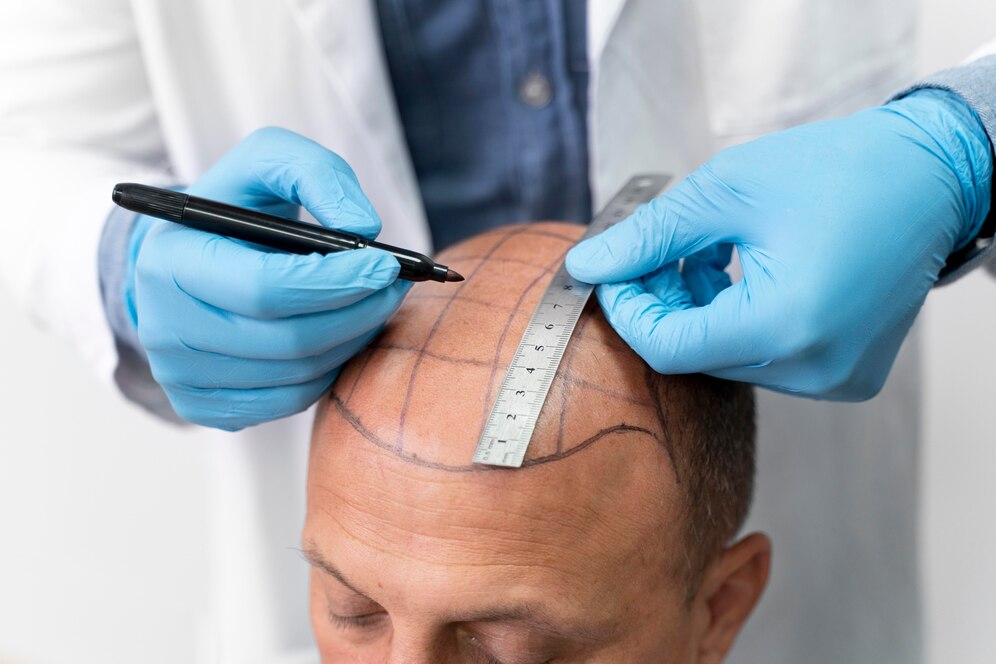Hair loss is a common issue that affects millions of people worldwide. Whether it’s caused by genetics, aging, or medical conditions, hair loss can significantly impact a person’s self-esteem and confidence. Thankfully, advances in medical technology have made hair restoration procedures, particularly hair transplant a popular and effective solution. In this article, we’ll delve into what hair transplants are, how they work, the types available, and what to expect from the procedure.
What is a Hair Transplant?
A hair transplant is a surgical procedure that involves transferring hair follicles from one part of the body (the donor area) to a bald or thinning area (the recipient area). The goal of a hair transplant is to restore natural hair growth in areas that have lost hair. This procedure is most commonly used to treat male pattern baldness but can also be effective for women experiencing thinning hair.
The hair transplant procedure has evolved significantly over the years, with cutting-edge techniques ensuring natural results. Unlike traditional methods, modern hair transplant techniques focus on extracting hair follicles individually or in small grafts, reducing scarring and improving the outcome.
Types of Hair Transplant Techniques
There are primarily two methods of hair transplant surgery, each with its own advantages and considerations:
1. Follicular Unit Extraction (FUE)
FUE is the most advanced and widely-used hair transplant technique. During FUE, individual hair follicles are extracted from the donor area, typically located at the back of the head, using a tiny, specialized instrument. These follicles are then implanted into the recipient area, where hair growth is sparse.
The main benefits of FUE include:
-
Minimally invasive: FUE does not require large incisions, which means there is minimal scarring and quicker recovery times.
-
No linear scar: Since the follicles are harvested individually, there is no linear scar, making it ideal for those who prefer to wear their hair short.
-
Natural-looking results: FUE provides highly natural results due to the precision with which each follicle is transplanted.
While the procedure can take several hours to complete depending on the size of the area being treated, FUE’s benefits make it a top choice for many patients.
2. Follicular Unit Transplantation (FUT)
FUT, also known as strip harvesting, is a more traditional method of hair restoration. In this procedure, a strip of skin is surgically removed from the donor area, usually at the back of the scalp. The strip is then divided into individual follicular units, which are transplanted into the recipient area.
The advantages of FUT include:
-
Higher yield: FUT allows for the transplantation of a larger number of follicles in a single session, which can be beneficial for patients who require a more extensive hair restoration.
-
Cost-effective: Since the process is generally quicker than FUE, it can be more affordable in some cases.
However, FUT does come with the drawback of leaving a linear scar, which may be visible if the hair is cut very short. Additionally, recovery times can be longer than FUE, as the scalp requires more time to heal from the incision.
Who is a Good Candidate for a Hair Transplant?
While hair transplants are suitable for many people, certain factors determine whether someone is an ideal candidate for the procedure. Some key factors include:
-
Age: While age is not a strict factor, hair transplants are generally more effective for individuals over the age of 25. Younger individuals may still experience hair loss, making it challenging to predict long-term results.
-
Hair loss pattern: A good candidate for a hair transplant typically has stable hair loss, where the pattern is predictable. Patients with widespread or extensive baldness may not be suitable candidates for hair transplants unless they have a sufficient donor area.
-
General health: As with any surgery, being in good overall health is important for successful outcomes and recovery.
A consultation with a qualified hair transplant surgeon can help determine if you are a suitable candidate for the procedure based on your unique situation.
The Hair Transplant Procedure: Step by Step
Here’s what you can expect during the hair transplant procedure:
1. Consultation and Planning
The process begins with a detailed consultation. During this appointment, the surgeon will assess your hair loss, discuss your expectations, and decide on the best course of action. Photographs of your scalp may be taken, and the surgeon will examine the donor area to determine the number of follicles available for extraction.
2. Local Anesthesia
Before the procedure begins, the scalp is numbed with local anesthesia to ensure you are comfortable and pain-free throughout the procedure.
3. Follicle Extraction
For FUE, the surgeon will use a small, circular punch tool to remove individual hair follicles from the donor area. For FUT, a strip of skin is removed from the back of the scalp, and the hair follicles are dissected under a microscope.
4. Follicle Implantation
The harvested follicles are then carefully implanted into the recipient area. The surgeon creates tiny incisions to insert the follicles at precise angles and depths, ensuring the hair grows in a natural direction.
5. Post-Procedure Care
After the transplant, the scalp may be slightly swollen and tender, but these symptoms typically subside within a few days. The surgeon will provide detailed aftercare instructions to ensure the best possible recovery and results.
Recovery and Results
The recovery time after a hair transplant is relatively short. Most patients can return to work and regular activities within a week. However, it’s essential to follow the post-operative care guidelines provided by your surgeon, such as avoiding direct sunlight and refraining from strenuous activities for a few weeks.
The transplanted hair will fall out within the first few weeks, but this is entirely normal. New hair growth typically begins around three to four months after the procedure. Full results may take up to a year to become visible as the transplanted hair continues to grow and mature.
Potential Risks and Complications
Although hair transplants are generally safe, there are some risks associated with the procedure. These can include:
-
Infection: As with any surgery, there is a risk of infection, but this can be minimized by following the surgeon’s aftercare instructions.
-
Scarring: While FUE minimizes scarring, FUT may leave a linear scar in the donor area.
-
Uneven results: In rare cases, the transplanted hair may not grow as expected, leading to uneven coverage.
Choosing a qualified, experienced surgeon can reduce these risks and increase the chances of a successful outcome.
Conclusion
Hair transplants are a life-changing solution for those struggling with hair loss. Whether you choose FUE or FUT, this procedure offers the possibility of restored confidence and a more youthful appearance. With careful planning and expert care, a hair transplant can be a transformative experience, providing lasting, natural-looking results. If you’re considering a hair transplant, consult with a reputable surgeon to determine the best approach for your unique needs.





